- Major boost for clean, homegrown energy as UK and US companies agree landmark commitments to build new nuclear power plants, including potential for up to 2,500 jobs for Teesside.
- UK-US sign new deal to get Britain building more nuclear and support billions in private investment into clean energy
- New ‘golden age’ of nuclear drives forward the government’s energy superpower mission to take back control of Britain’s energy for good.
Working people will benefit from jobs and growth as companies in the UK and United States sign major new deals that will turbocharge the build-out of new nuclear power stations in both countries.
The deals between US and UK companies have been enabled by a new agreement between the US and UK governments, expected to be signed at the state visit this week. This will make it quicker for companies to build new nuclear power stations in both countries, for example by speeding up the time it takes for a nuclear project to get a licence from roughly three or four years to roughly two.
The deal clears the way for a major expansion of new nuclear projects in the UK, a sector which has already seen 11,000 new jobs this year following government-led investment, according to new statistics from the Nuclear Industry Association.
The expansion of nuclear power is central to the UK government’s clean energy superpower mission, as part of the UK’s drive to build more clean homegrown power to ensure energy security.
Building on existing UK and US collaboration including between Rolls-Royce and BWXT, the government has increased access to the market for both UK and US companies with new major commercial deals to be announced this week:
- X-Energy and Centrica - plans to build up to 12 advanced modular reactors in Hartlepool, with a follow-on UK wide programme targeting a fleet of 6GW of nuclear power. According to the companies, the Hartlepool project would generate enough power for up to 1.5 million homes and create up to 2,500 good jobs. The companies estimate the overall programme could deliver at least £40 billion in economic value, with £12 billion in value focussed for the North East of England.
- Holtec, EDF and Tritax - plans to develop advanced data centres powered by small modular reactors at the former Cottam coal-fired power station in Nottinghamshire. Holtec estimate the project value to be around £11 billion, and it is expected to create thousands of high-skilled construction jobs, as well as long-term roles in operations for the local community.
- Last Energy and DP World – plans to establish one of the world’s first micro modular nuclear power plants, backed by £80 million in private investment, to unlock a clean power supply for the expansion of DP World’s London Gateway port and business park.
- Urenco and Radiant – signs a deal, worth around £4 million, to supply advanced HALEU fuel to the US market. Urenco is building an Advanced Fuels Facility in the UK co-funded with the UK Government and is exploring building a similar facility in the US.
- TerraPower and KBR – plans to conduct studies and evaluate sites in the UK for the deployment of the Natrium advanced reactor technology, with each Natrium reactor supporting around 1,600 construction jobs and 250 permanent jobs and delivering safe, reliable and flexible nuclear power paired with gigawatt-scale energy storage.
The UK’s new ‘golden age’ of nuclear follows the announcement of the biggest build-out of new nuclear power in generations, including a multi-billion deal giving Sizewell C the green light. This is alongside the development of one of Europe’s first small modular reactor programmes, and record investment in fusion.
Prime Minister Keir Starmer said:
This landmark UK-US nuclear partnership is not just about powering our homes, it’s about powering our economy, our communities, and our ambition.
These major commitments set us well on course to a golden age of nuclear that will drive down household bills in the long run, while delivering thousands of good jobs in the short term.
Together with the US, we’re building a golden age of nuclear that puts both countries at the forefront of global innovation and investment.
Energy Secretary Ed Miliband said:
We’re kickstarting a golden age of nuclear in this country, joining forces with the US to turbocharge new nuclear developments and secure the technologies of the future.
Nuclear will power our homes with clean, homegrown energy and the private sector is building it in Britain, delivering growth and well-paid skilled jobs for working people.
U.S. Secretary of Energy Chris Wright said:
With President Trump’s leadership, the United States is ushering in a true nuclear renaissance – harnessing the power of commercial nuclear to meet rising energy demand and fuel the AI revolution.
Meeting this demand will require strong partnerships with our allies around the world and robust collaboration with private sector innovators.
Today’s commercial deals set up a framework to unleash commercial access in both the U.S. and UK, enhancing global energy security, strengthening U.S. energy dominance, and securing nuclear supply chains across the Atlantic.
U.S. Secretary of the Interior Doug Burgum said:
With the United States at the helm of a global energy transformation, our strategic partnerships are driving the advancement of nuclear technologies, securing a clean, reliable and secure energy future for generations to come. Strengthened nuclear cooperation with the UK reinforces our unshakable commitment to technological leadership, global security and the responsible stewardship of nuclear power. This is how we unleash the full power of American Energy Dominance - with innovation, strength, and key geopolitical collaboration.
The biggest backing of nuclear in a generation is leading to a private sector boom, cementing the UK as a world-leading investment destination for nuclear with US companies entering the market to create jobs and growth for working people in Britain’s industrial heartlands. Figures published today by the Nuclear Industry Association show that the nuclear industry now employs a record 98,000 people in the UK.
Under previous governments the build-out of new nuclear has been slow due to inaction, delay and red tape. This deal will help speed up deployment for both US and UK companies entering the market.
The partnership extends to fusion energy, through coordinated experimental programmes where British and American expertise will combine with AI technology to develop advanced simulation tools, whilst test facilities will fast-track progress towards commercial fusion power.
British families will also see even stronger energy security as the partnership agrees to eliminate any last dependencies on Russian nuclear material by the end of 2028 – further squeezing Putin out of the energy market. Together with the US, the UK is boosting the resilience of our fuel supply chains and breaking global reliance on hostile energy sources.
The agreement between the two countries, known as the Atlantic Partnership for Advanced Nuclear Energy, demonstrates how international collaboration delivers tangible benefits for British workers and families through secure, clean energy and high-quality employment opportunities across the country.
This government is ending the no-nuclear status quo through a golden age of nuclear, taking decisive action over the past year to including record funding for Sizewell C supporting around 10,000 jobs at peak construction, streamlining planning rules to build nuclear quicker and selecting Rolls-Royce SMR to build the country’s first small modular reactors.
Mike Finnerty, Chief Executive and Chief Nuclear Inspector of the Office for Nuclear Regulation said:
The opportunities presented through the refreshed Memorandum of Understanding, and new collaborative way of working outlined in the partnership agreement, clearly reaffirm our shared commitment to effective, safe and secure nuclear operations. We have had a strong relationship with US counterparts for many years, and we look forward to developing greater collaboration to optimise the collective regulatory efforts in the best interests of our two nations.
David A. Wright, Chairman of the U.S. Nuclear Regulatory Commission said:
We are taking our long-standing partnership with UK’s Office of Nuclear Regulation to the next level and redoubling our joint efforts to advance, enable, and deploy nuclear technologies for the future.
Simon Bowen, Great British Energy – Nuclear Chair said:
The UK-US commitment to nuclear energy sends a clear signal - this is a pivotal moment for energy security and clean growth. There is enormous potential to unlock investment in the UK’s nuclear sector - supporting high-quality jobs, regional growth, and the development of a resilient, capable supply chain. GBE-N is ready to work with the industry to turn today’s commitments into delivery - accelerating deployment and ensuring the UK captures the full economic and strategic value of nuclear energy.
Tom Greatrex, Chief Executive of the Nuclear Industry Association said:
These deals are hugely welcome and build on a summer of record government investment in nuclear which is driving an industrial revival, creating thousands of high-value jobs, and strengthening the UK’s energy security. New projects with our US partners build on Sizewell C and the SMR programme, showing the power of government and industry working together. The next step is clear: a pipeline of follow-on projects to lock in skills, investment, and prosperity across the UK.
Chris O’Shea, Group Chief Executive of Centrica said:
Centrica is proud to be at the forefront of Britain’s clean energy transition - investing in infrastructure and jobs that meet today’s energy needs while enabling tomorrow’s ambitions. Our partnership with X-energy marks a bold step forward in delivering advanced nuclear technology that is not only scalable and secure, but also vital to decarbonising industry and powering homes. The Xe-100 fleet will help build a resilient, low-carbon energy system that supports national security, affordability, and sustainability. From Sizewell C to Hartlepool, we are backing Britain’s energy future - and building it.
J. Clay Sell, CEO of X-Energy said:
Our partnership with Centrica represents a commitment to bring X-energy’s industry-leading advanced nuclear technology to the U.K. at scale. Together, we aim to build a fleet that will reliably deliver clean power, strengthen energy security, and grow the trans-Atlantic economy for decades to come. Hartlepool is the right place to begin this journey, with an established industry and a base of professionals and services who can help drive the next generation of nuclear forward.
Simone Rossi, CEO of EDF in the UK said:
Investing in nuclear power brings energy security and high quality jobs to the UK. Having restarted the UK’s new nuclear programme at Hinkley Point C, EDF is excited to see further projects coming forward and looks forward to bringing its skills and expertise to bear in support of the country’s nuclear ambitions.
Dr Kris Singh, Chairman & CEO of Holtec International said:
Together with EDF and Tritax, we will help the UK seize a leadership position in both advanced nuclear deployment and the global AI race. The SMR-300s at Cottam represent a potential $15 billion project, creating thousands of local jobs while drawing on the lessons from our Palisades project in Michigan. With this second-of-a-kind deployment, the UK is well positioned to join a global coalition of countries adopting the SMR-300 to drive long-term economic growth.
James Dunlop, CEO of Tritax said:
The Cottam project is another example of the collaboration between EDF and Tritax to deliver projects of scale to accelerate the development of a substantial cluster of data centres. This development showcases how Government and the private sector can work together to deliver best in class low carbon energy generation to enhance the UK’s critical national infrastructure.
Michael Jenner, CEO of Last Energy UK said:
Nothing demonstrates UK-US trust in international trade more than bringing American nuclear technology to one of Britain’s most pivotal ports. A new Last Energy microreactor at London Gateway will bring clean power to the £1 billion port expansion, creating new skilled jobs while strengthening our shared commitment to free enterprise.
Boris Schucht, CEO of Urenco Group said:
Today’s announcement reflects the strong global leadership of the United States and the United Kingdom in supporting the deployment of the next generation of reactors and in expanding and strengthening the Western nuclear fuel supply chain. This deal represents a very positive step for the development of small modular reactors in the industry and additionally will help support around 400 highly skilled jobs at Urenco’s Advanced Fuels Facility in Cheshire, UK, which is currently being built.
Dr. Rita Baranwal, Chief Nuclear Officer at Radiant said:
This announcement is a great example of the vital role the United States and United Kingdom jointly play in leading the advancement of the nuclear industry. It is also another step forward in our mission to build mass-produced nuclear reactors – an advancement which will require continued growth of the global supply chain.
Chris Levesque, President and CEO of Terra Power said:
TerraPower is committed to delivering reliable power that addresses rising energy demand with a solution built for flexibility that the future energy grid requires. We are moving forward from conversations into action – working with both our government and private partners to identify ideal sites and communities in the UK where this technology can thrive.
Jay Ibrahim, President of KBR Sustainable Technology Solutions said:
Expanding our collaboration with TerraPower to the United Kingdom marks a significant milestone in advancing clean, reliable energy solutions globally. By combining KBR’s leading program management and project delivery capabilities with TerraPower’s expertise in advanced nuclear technology; this collaboration aims to deliver cost-effective, scalable energy solutions for clients globally.
Tufan Erginbilgic, CEO of Rolls-Royce said:
We welcome the decisive action the US and UK Governments are taking to deepen their cooperation in advanced nuclear technologies. This historic agreement will strengthen the energy security and resilience of both nations, creating thousands of high-skilled jobs, attracting billions of investments and supporting economic growth. Rolls-Royce has unique capabilities in nuclear, as the only company globally with full lifecycle experience, end-to-end capability and an established supply-chain. We look forward to seizing the opportunities created by this agreement to further innovate and partner on both sides of the Atlantic in the development of advanced nuclear technologies.
Roger Martella, Chief Corporate Officer of GE Vernova said:
GE Vernova welcomes the regulatory MOU between the US and UK. We are proud our technology plays a first-mover role in enabling global deployment of SMRs and to support both the US and UK’s leadership positions. Regulatory simplification and harmonisation will help to reduce costs and speed up the construction of the first wave of SMR plants. We are proud of our 120-year heritage in the UK, with around 3,500 employees across the country, and look forward to supporting the UK’s exciting SMR ambitions.
John Heller, CEO of Amentum said:
The US State visit reflects the unique strength of the UK-US partnership and our shared determination to drive economic growth and prosperity. The energy resilience and national security of both nations depend on continued leadership and advances in energy and technology – the focus of this visit. Commitments by both governments to back and invest in these industries help drive Amentum’s continued growth and investment in innovation, jobs and skills on both sides of the Atlantic.
Notes to editors:
- Under the deal, both countries will fast-track reactor design checks, meaning if a reactor has already passed rigorous safety checks in one country, this work can be used by the other to support its assessment, avoiding duplicating work.
- This builds on collaboration between regulators for the ongoing UK assessments of GE-Vernova and Holtec reactor designs.
- This smarter streamlined approach will help speed up approvals for nuclear, to around 24 months, for advanced designs like the Rolls-Royce SMR, boosting British exports and getting Britain building. It comes as Rolls-Royce announces it has entered the US regulatory process for its SMR.
- UK and US will also work hand-in-hand to share the workload of new projects entering site licensing, speeding up delivery, to get nuclear project sites in the UK approved more quickly. These checks are vital to ensure nuclear sites are suitable, but by closer working with the US, the UK will build world-class nuclear standards while accelerating delivery - boosting energy security, driving growth and creating jobs.
- The partnership extends to fusion energy through coordinated experimental programmes where British and American expertise will combine with AI technology to develop advanced simulation tools, whilst test facilities will fast-track progress towards commercial fusion power.
- A Global Fusion Energy Policy Summit will be co-hosted in the United States in 2026, to strengthen international cooperation on fusion energy.
Picture and Story from Gov.uk

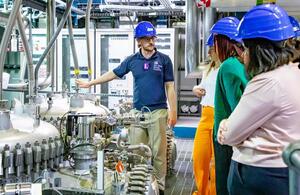
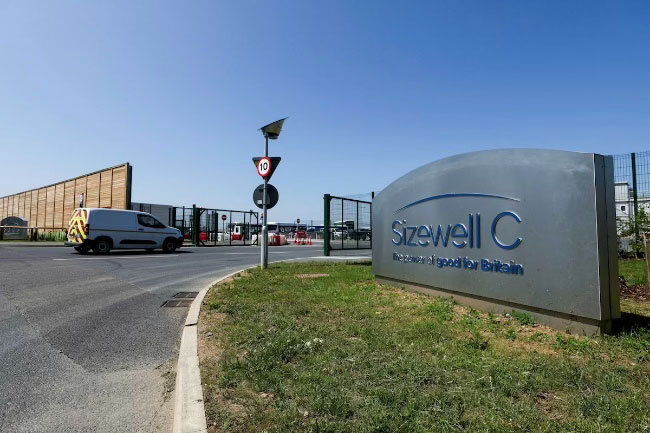
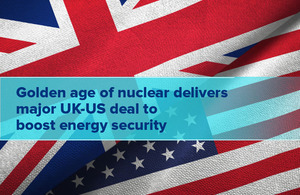
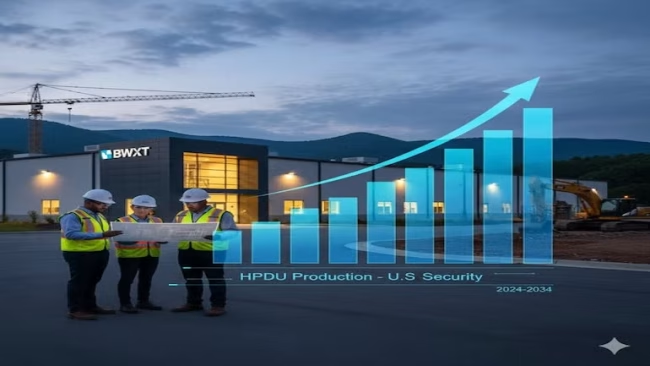
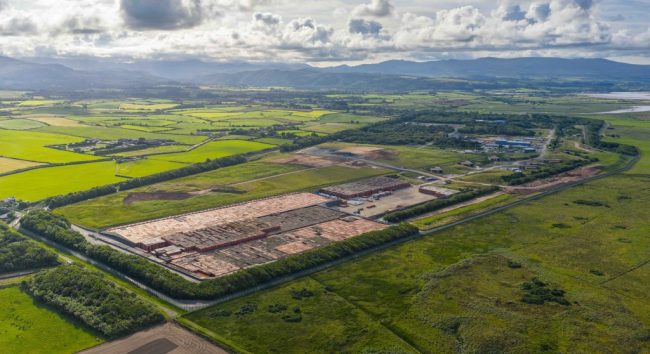
As the industry expands, opportunities are emerging across every part of the value chain — from engineering and manufacturing to logistics, safety, and operations. At Nuclear Careers, we’re helping connect skilled professionals with the organisations leading this transformation.
👉 If you’re ready to plan your talent & skills strategy, we can help.
👉 For candidates interested to play a role in shaping the future of clean, secure energy, now is the time to get involved.